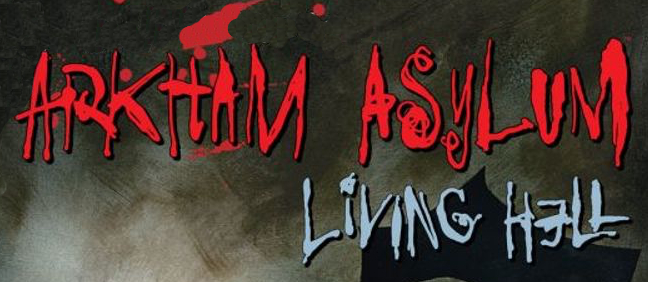Arkham Asylum: The Worst Place For Criminals To Reform?

Continually thought of as a safe house for the mentally unstable, Asylum’s, or the more politically correct, Mental Hospitals, are used to treat those that need help in some sort of mental capacity.
In the world of DC Comics, the most well-known Institution of this Kind is none other than Arkham Asylum.
What if, however, those that are there to help are the ones who need the help?
Secondly, what if the “help” they are there to receive is a violation of human rights?
Elizabeth Arkham Asylum for the Criminally Insane is a Psychiatric Hospital located on the outskirts of the fictional town, Gotham City (or as most know it, Batman’s City) and debuted in Batman #258 under the name, Arkham Hospital.
Long thought of as a haven for the mentally unstable, Arkham has “Treated and Housed” the most despicable characters within the DC Universe.
On any given day, you might find the likes of:
Ra’s al Ghul
Harvey Dent
With a who’s who list of villains that never reform under the care of the Arkham officers, it makes you question the ability of the Asylum to “treat” its patients.
Comic books have an amazing ability to tell a story (which is why my brother and I like them so much), however, much like the ‘real life’ media, they often leave out important details.
Allow me to explain.
It is no secret that Mental Hospitals of old utilized some questionable tactics with their patients.
According to http://ca.complex.com/pop-culture/2013/01/crazy-mental-asylums/byberry-mental-hospital, the Byberry Mental Hospital was so terrible to its patients that it was compared to a “Nazi Concentration Camp.” Inmates could be found sleeping in their own excrement or wandering the halls naked.
If that isn’t enough, I refer you to the Pennhurst Insane Asylum?
This facility was built to “Educate and Care” for the Mentally Disabled people of the United States. However, this is couldn’t be further from the truth. There are countless stories, images and evidence showing otherwise.
In this Asylum, a child’s scream would go unheard as they echoed through the halls. Children who bit others more than once would have their teeth pulled. Pennhurst was also known for the sexual and physical abuse found within its walls.
I ask again, what if those that are there to help others are the ones who need the help?
What if the”help” they are there to receive is a violation of human rights?
If this is the case, then it is no shock that its patients leave worse than when they arrived.
I point to The Joker.
As the years have gone by since his debut, he has morphed from a “friendly” criminal, played by Cesar Romaro in the campy 1960’s Batman show, to a character who ruthlessly beat Jason Todd to death, paralyzed Barbara Gordon, and peeled off his own face, only to pin it to a wall in the DC New 52 Reboot.
Could Arkham Asylum have been responsible for his tragic, downhill spiral?
How about his accomplice, Harleen Quinzel, or Harley Quinn?
Originally a psychiatrist at Arkham Asylum, Harley is a prime example of the kind of work Arkham does.
Is it not completely possible that the things Harley witnessed on a daily basis, (the Physical Abuse of Patients, the Inhuman Way in which they were treated and they Violation of Their Rights) might have swayed her to help The Joker and thereby land herself his right-hand person?
The question then becomes: Does Arkham set its patients up so that when they leave, they will continue to commit crimes so that it may have another chance at them, or does it actually attempt to help its patients out?
You may be thinking to yourself that this is absurd and these sorts of places don’t exist.
I will remind you that the two, real life examples above ran undetected for 80 and 79 years respectively.
If you require just one more example, then allow me to show you.
Jonathan Crane, or Scarecrow as he is more commonly referred to, was a psychiatrist who had a fascination with fear. This fascination led him to take up a position at Arkham so that he may perform experiments on its patients.
Is this a surprise?
No, I don’t think it is.
Jonathon worked within the Arkham walls, and he himself was a part of its secrets.
Could the continual experimentation have driven him to become what he is?
Yes.
It is then reasonable to think that his experiments became of by-product of the Asylum.
I then ask just one more time:
What if, however, those that are there to help are the ones who need the help?
What if the “help” they are there to receive is a violation of human rights?
I don’t doubt the validity of some of the Mental Hospitals of the world, however, places such as Arkham make me think twice about them.

